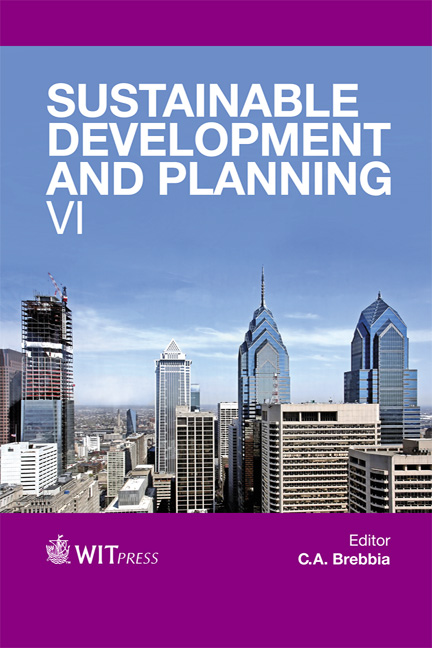The Thermal Performance Of Green Roofs In A Hot, Humid Microclimate
Price
Free (open access)
Transaction
Volume
173
Pages
12
Page Range
475 - 486
Published
2013
Size
2,219 kb
Paper DOI
10.2495/SDP130401
Copyright
WIT Press
Author(s)
Umica D’Souza
Abstract
Green roof applications can alleviate the heat island effect in cities and positively contribute to sustainable development by regulating building temperatures and enhancing its impact and effectiveness on the built environment. Green roofs are an innovative concept for the planning and development of future cities. The aim of this research paper is to review evidence of the environmental impact of using green roofs when compared to a conventional roof in the hot and humid microclimate of the United Arab Emirates (UAE). In order to achieve this, a micro-scale urban ENVI-met model of the Dubai Marina is tested. The parameters measured in this experiment include Surface Albedo (SA), Mean Radiant Temperature (MRT), Relative Humidity (RH) and Predicted Mean Vote (PMV). Improvements in plant to air interaction were also studied using ENVImet simulation software; a three-dimensional microclimate model was designed to simulate surface-plant-air interactions in the urban environment. The programme was used in order to gauge the temperature variations of green roofs when compared to using conventional roofs. A study was conducted on June 21st, 2011 at 1:00 pm and December 21st, 2011 at 1:00 pm which depicted variations in temperature due to the impact of green roofs between these two different periods. During the hot, humid months SA and PMV were the predominant changes documented due to the impact of green roofs. However, during the winter months temperature changes such as, MRT and RH were clearly visible in the ENVI-met simulations. The research revealed findings to suggest that a green roof can contribute to a significant improvement in the thermal comfort levels of the surrounding built environment. These findings can be used by the relevant stakeholders, planners, architects, engineers and developers to recommend green roofs as a necessity for the sustainable development of future cities.
Keywords
thermal performance, green roofs, hot, humid micro-climate, sustainable development, planning, sustainable architecture, built environment and heat island





